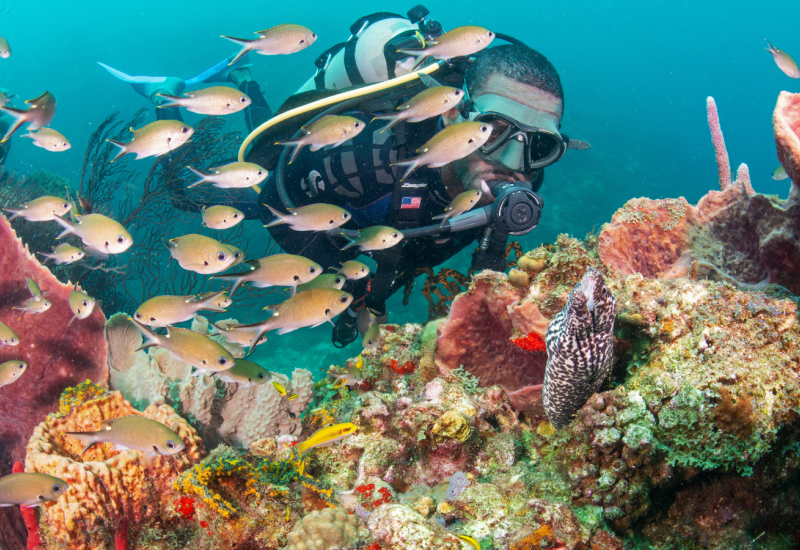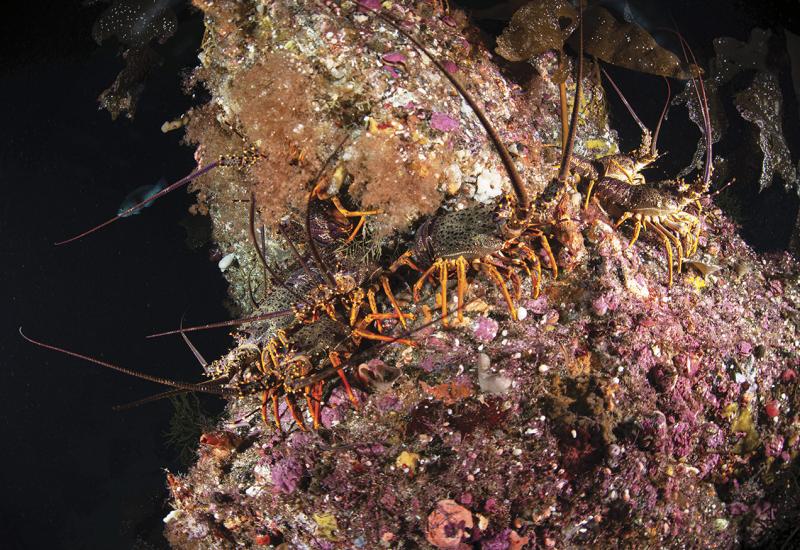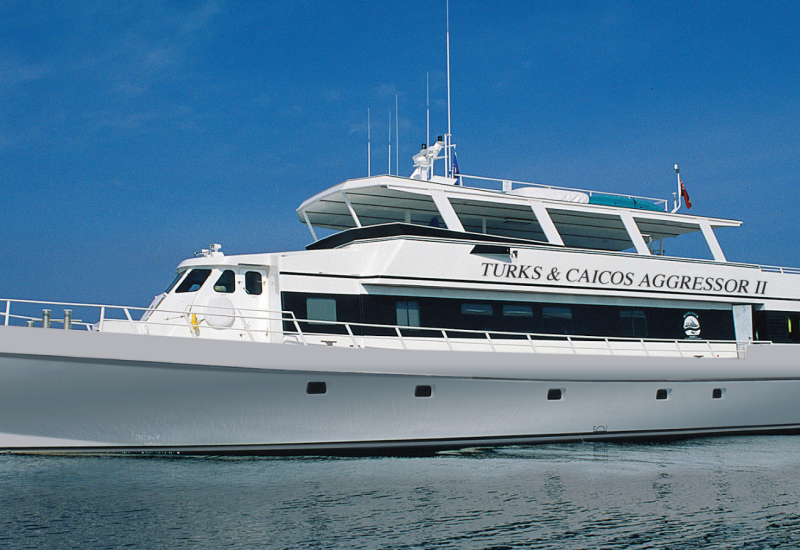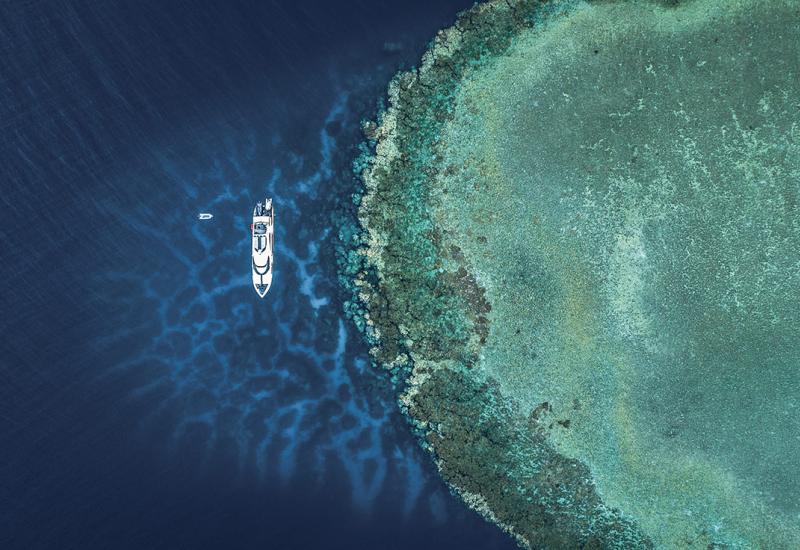Smoke Show: Where to Dive Top Coral Spawn Events
Rock, plant or animal. If given these choices, many people—divers included—might not correctly identify which category corals fall under. But corals are indeed animals, and as such, they have sex. Their reproductive act happens to be one of the most wondrous sights to witness underwater, in large part because so many colonies of coral will synchronize their fornication, simultaneously releasing eggs and sperm into the water column. All at once, it’s a blizzard of tiny, ping pong-ball-like eggs and smoky clouds of sperm, mixing and mingling to become the next generation of coral that makes all life on the reef possible. And you can practically set your watch to it. Scientists and dive operators have learned how to accurately predict on what night of the year the show will happen for hundreds of coral species, nearly guaranteeing a unique experience for divers who travel to see it.
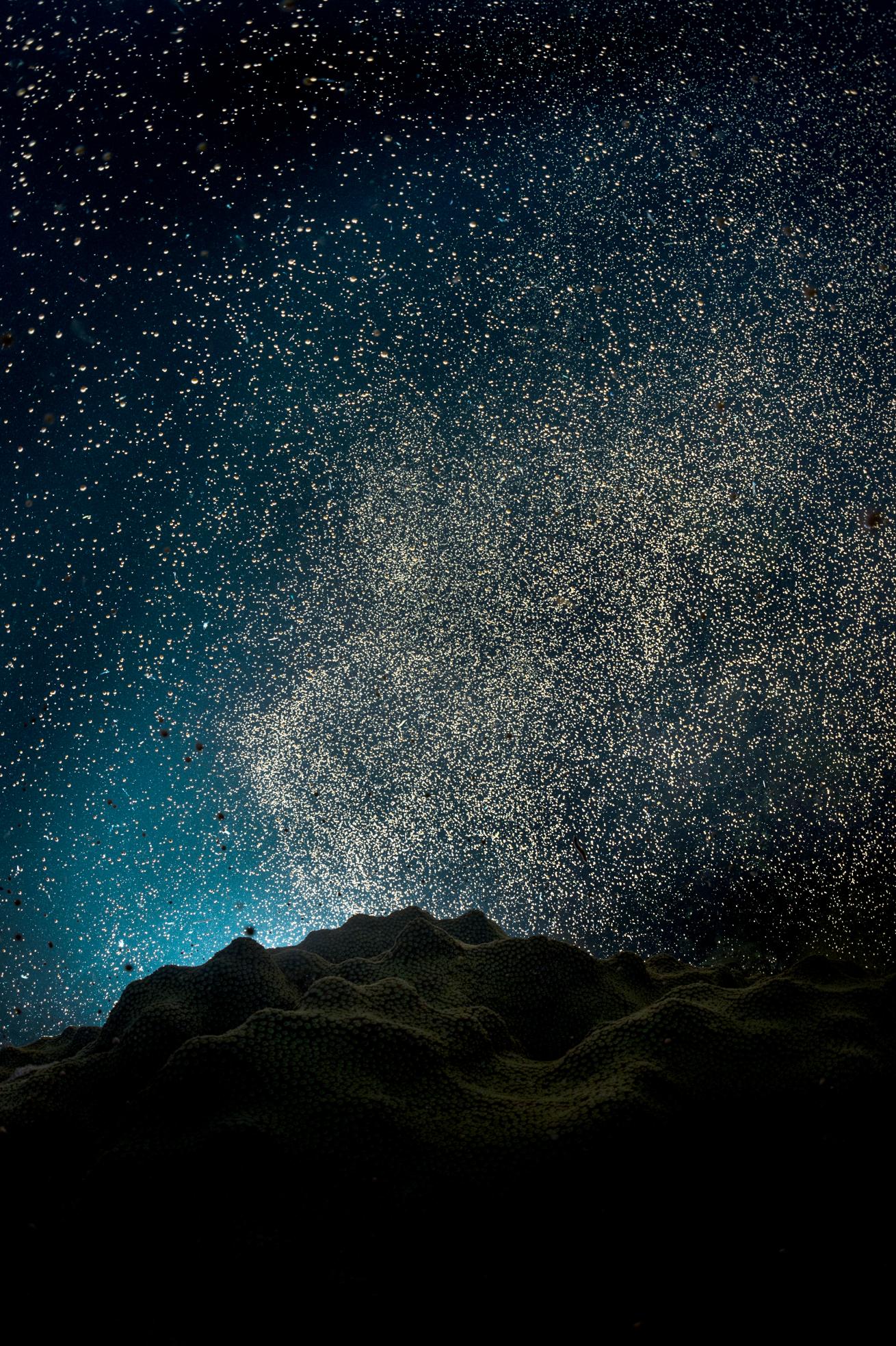
Alex MustardBacklighting reveals tiny gametes expelled into the water column by mountainous star coral off East End, Grand Cayman.
1. Grand Cayman, Cayman Islands
As soon as Steve Broadbelt, owner of the Ocean Frontiers dive center on Grand Cayman, read about the coral spawn in National Geographic, he set out to find it in his own backyard. It took a few years until, in 2002, he realized that the spawn occurred a month earlier than he had guessed—and boom. Magic. He has been diving every year since.
For the past 20 years, Broadbelt has been recording the spawning window—down to the minute—to dial in that process, all while shepherding divers to see the natural wonder.
Today, that looks like three 46-foot dive boats filled to guest capacity on the three biggest nights of the spawn. Each night starts with a 40-minute presentation. “It’s a cheat sheet on exactly what to look for,” he says. His team explains how a coral spawning works, and helps identify the right coral heads that will spawn that night.
He steers his guests toward only a few species, which he calls the crowd pleasers. “The crowdpleasers are your boulder corals, the mountainous and lobe corals. They are Old Faithful. They perform every year, and they show up right on time.”
Mountainous star corals tend to be the most synchronized, with the majority all going off within seconds, making for a great photo op.
To find the crowd-pleasing reefs, the team at Ocean Frontiers has narrowed its 55 dive sites to the best five for coral coverage. “You can see a coral the size of a volleyball spawn, or you can watch one that’s the size of a small car,” he says.
Obviously, people want the latter.
Even with the expanded briefing and a dive planned on the best site, it’s still possible to miss the action—especially if you don’t know a pineapple coral from a star coral—which is why Broadbelt and his staff devote their dive to swimming around and making sure guests are positioned just so. “It might be the best fireworks show in the world, but it’s nothing if you’re not looking in the right direction,” he says.
When to go: The best night for the spawn is six days after the full moon of September. The spawn can occur in August and October, but September is most reliable.
Water temperature: Expect 87 degrees; corals spawn during the months when ocean temps are hottest.
Visibility: Cayman is known for 100 feet of visibility, with shallow, flat reefs offering 80 feet.
Operator: Ocean Frontiers
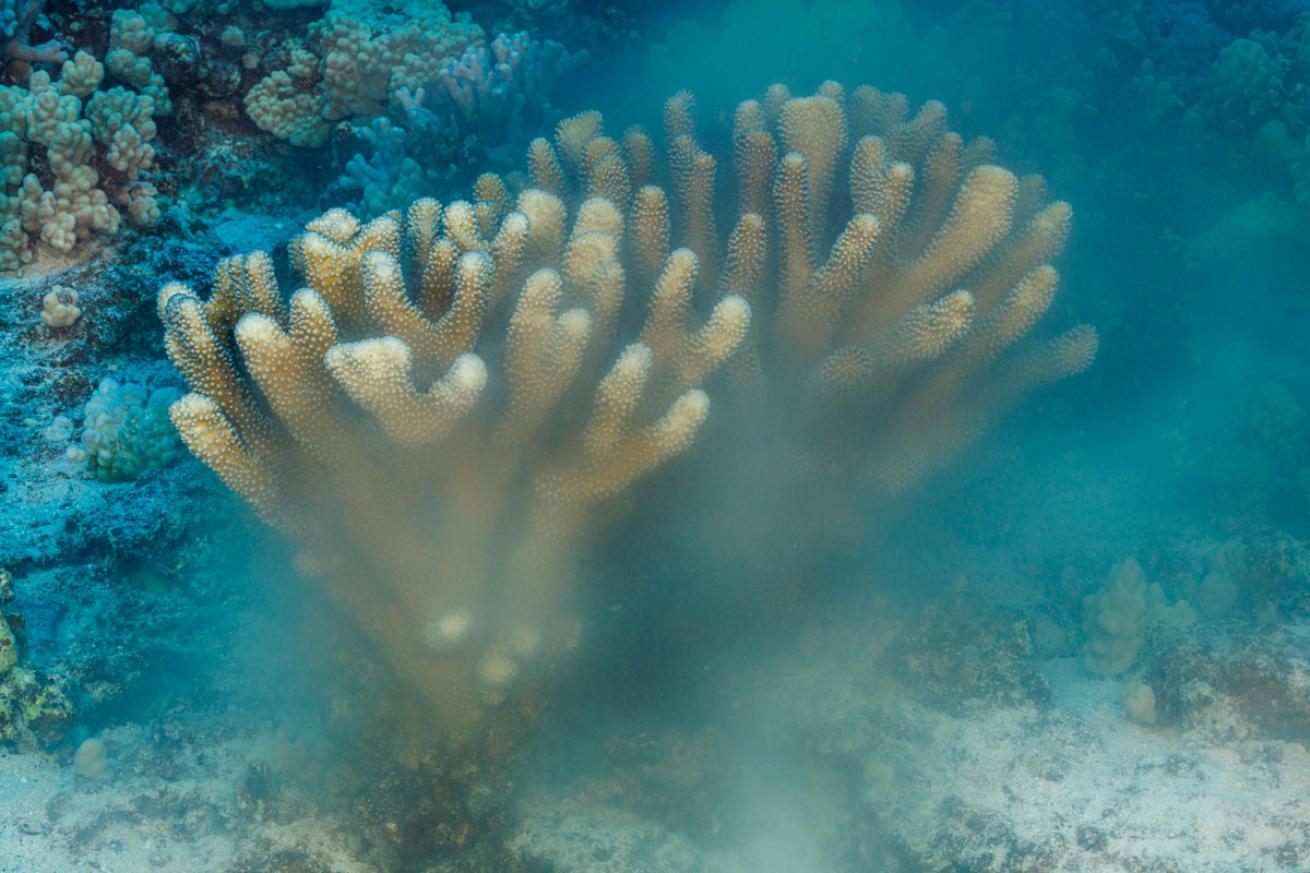
David FleethamA spawning colony of antler coral; an overhead view of the event near Maui; a close-up of spawning coral polyps.
2. Maui, Hawaii
The bad news is that after you drop in for a coral spawn night dive off Molokini Crater, 2.5 miles off the Maui coast, a spawning experienced via shore dive feels tame by comparison. “
Molokini is such a dramatic slope—it is the place to see a spawning event,” says Pauline Fiene, a dive guide with Extended Horizons ScubaDive Shop. Molokini is home to thick, end-less colonies of cauliflower coral. With its super clear visibility, it delivers an outstanding show. Then factor in the opening act: Antler corals, growing in smaller numbers, spawn just 15 minutes before the cauliflower coral main event. “Antler corals appear to have a thousand tiny doors opening, and the eggs and sperm can then release, and it looks like smoke,” she says. “You can’t believe how much comes out of one colony.”
The tricky part, of course, is the timing. The spawn lasts just 15 minutes, and many dive sites off Molokini start at 80 feet deep. Then there’s the issue of the corals being in the mood.“
We know they are communicating chemically,” says Fiene. “But we don’t know why there are days when only 10 colonies out of hundreds decide to spawn, and then other days where it is an utter whiteout.
When to go: Days 1, 2 and 3 after the full moon of May.
Water temperature: Low to mid-80s.
Visibility: Visibility can be between 70 and 120 feet.
Operator: Extended Horizons
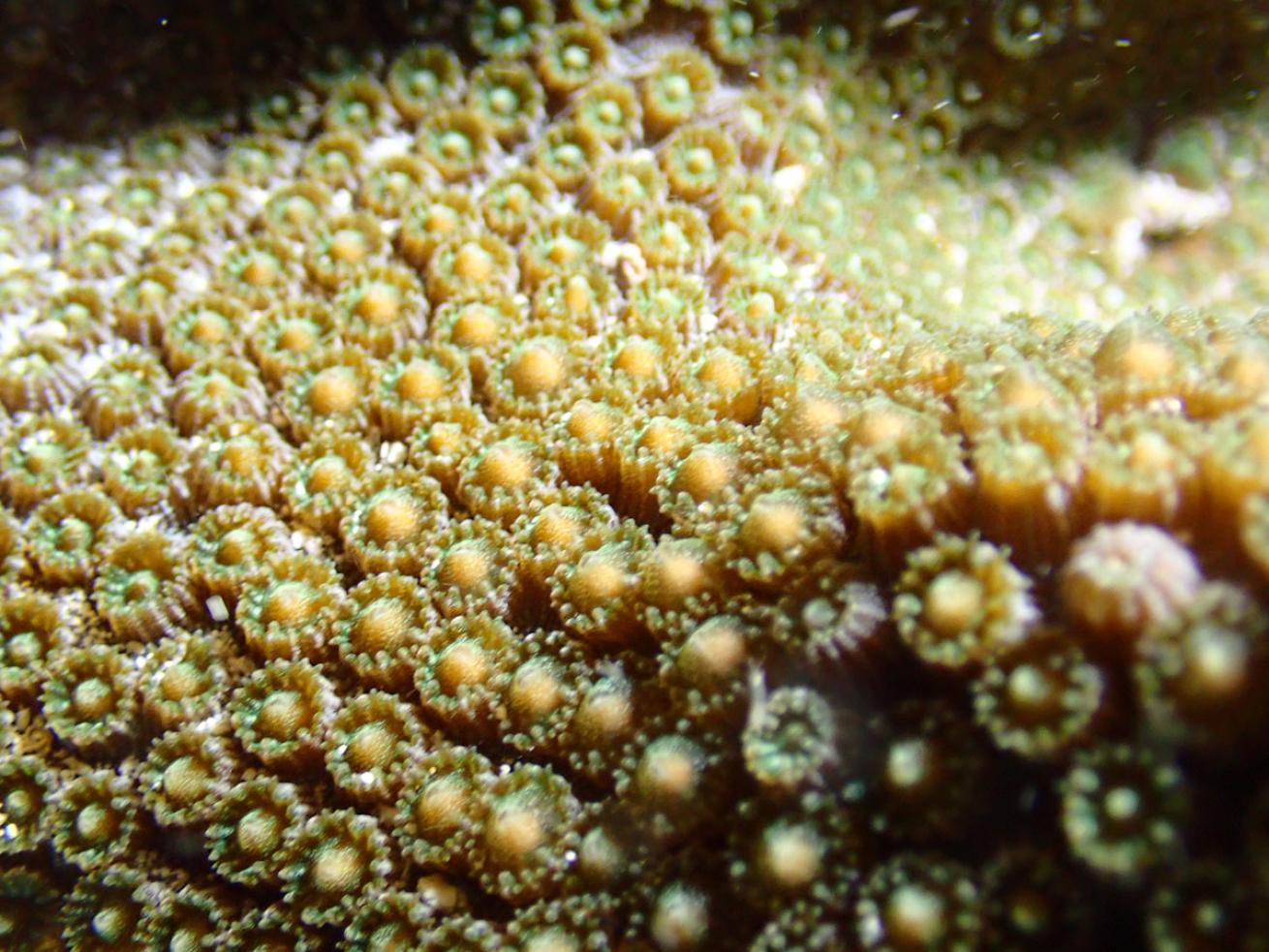
Dr. Hanna Koch Mote Marine LaboratoryScientists at Mote Marine Laboratory & Aquarium observed this out planted mountainous star coral spawning in the Florida Keys
3. Islamorada, Florida Keys
Although coral spawning has long been the focus of local government and scientific teams in the Florida Keys, recreational spawning dives are still a relatively new offering. Times for the more predictable corals have been recorded, but many spawnings are still awaiting discovery.“
We didn’t advertise this year’s spawn to divers because we didn’t feel confident that we could actually see it,” says Kylie Smith, co-founder of Islamorada-based coral restoration nonprofit iCare. For the 2022 spawn, she and her team joined a regularly scheduled night dive run by Islamorada Dive Center. They targeted the site Cheeca Rocks, chosen for its high coral cover and shallow depth of 18 to 25 feet. “ The nearshore reefs have a lot of complexity,” says Smith, crediting that to the relatively high verticality and physical structure of the systems. That site in particular is thriving more than deeper sites, as corals in the shallower areas have adapted to high UV light as well as greater variance in water temperatures.
Sure enough, they saw what they’d come for. “It wasn’t what I expected,” says Smith of spawning of great star coral.“We saw sperm coming out, and it looked like a little fountain.” She adds, “If you hadn’t been looking for it, you could have completely missed it.”That sighting will grant Smith, and other Keys-based coral researchers, more accuracy for the 2023 spawn. And with that, she says, “We definitely feel more confident about next year.”
When to go: Three to five days after the full moons in August and September.
Water temperature: Water temperature last year was 92 degrees.
Visibility: Average visibility ranges from 50 to 80 feet.
Operator: Islamorada Dive Center
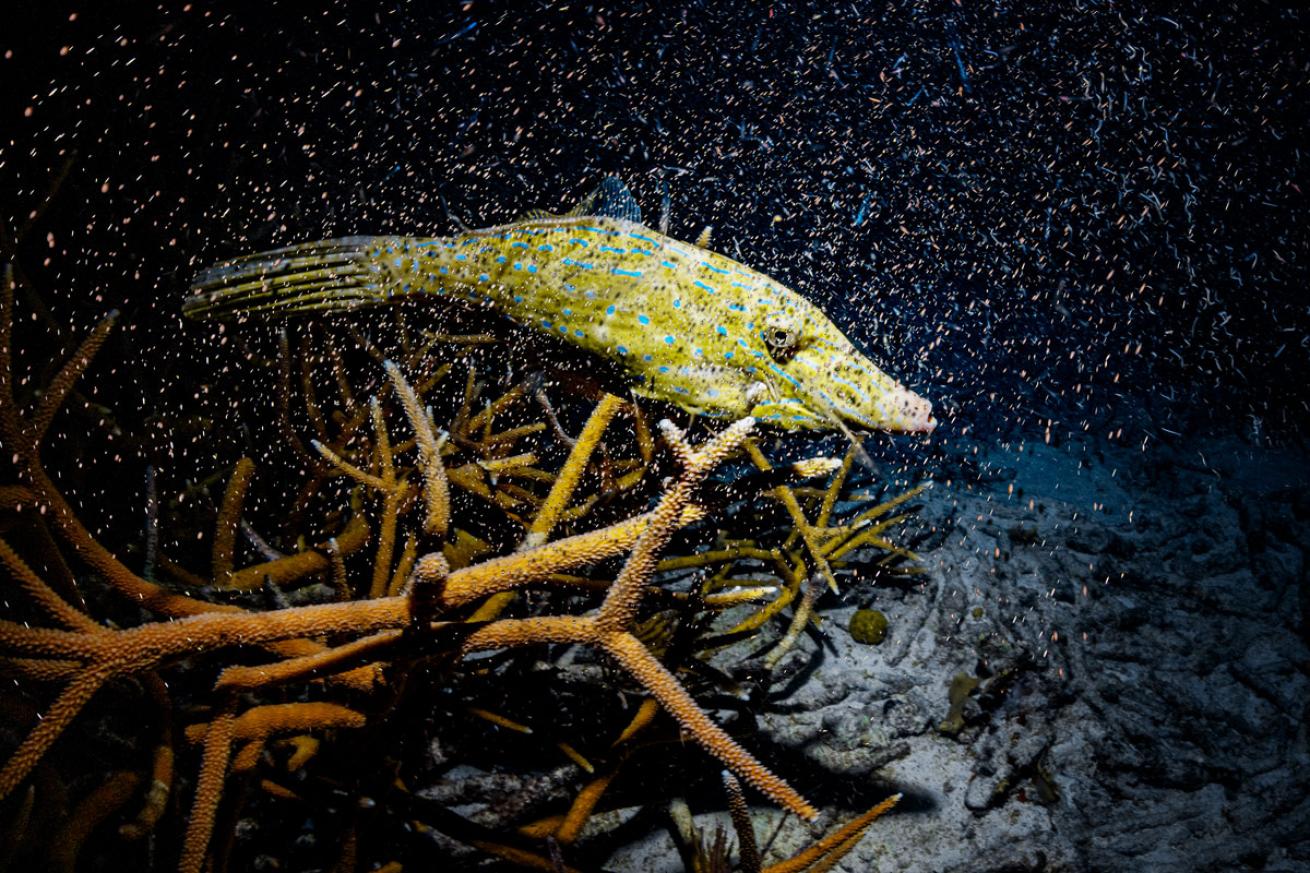
Lorenzo MittigaA scrawled filefish weaves between branches of spawning staghorn coral on a night dive.
4. Bonaire
With an entire coastline accessible for shore diving, Bonaire offers travelers the greatest amount of freedom in the Caribbean for a coral spawn dive.
Local operator VIP Diving offers the greatest flexibility for choosing your own agenda, as groups are limited to four divers. “We have the ability to dive wherever and whenever we want,” says Nicole Pelletier, dive instructor for VIP Diving. With that kind of flexibility, she adds,“ VIP schedules night dives any night that people want.” Which makes it easy to choose which-ever variety of coral you find most intriguing. “A lot of people want to see brain corals because that is what they have seen in photos,” says Pelletier, who has her own list of favorites.
But watching one species spawn is just the beginning.
On the neighboring island of Curaçao, the Caribbean Research and Management of Bio-diversity Foundation, aka CARMABI, has conducted thorough research on coral spawnings, publishing that data for public use. “This chart is amazing because if you look at a lot of places in the world, they have not targeted the spawn down to the minute,” says Pelletier.“
Staghorn, when it spawns, cool to watch,” she says, referring to the eraser-like balls sitting just outside the polyps of the entire branch or colony before spawning. Staghorns grow in big colonies at several Bonaire sites, including the Lake, south of the Town Pier, and on the house reef at Buddy Dive Resort.
Or opt to see thickets of elkhorn corals at sites such as Bari Reef and Something Special. Grooved brain corals thrive at Bari Reef and the VIP Diving house reef.
With the spawning times of 19 species pinpointed and 65 shore dives to choose from, the hardest part might just be deciding what to see.
When to go: Spawning can be seen April to October using CARMABI’s predictions from nearby Curaçao. Staghorn corals often spawn days 1 to 5 after the August full moon, with elkhorn spawning days zero to 14 in the same month.
Water temperature: 78 to 85 degrees from spring to fall.
Visibility: 40 to 60 feet.
Operator: VIP Diving
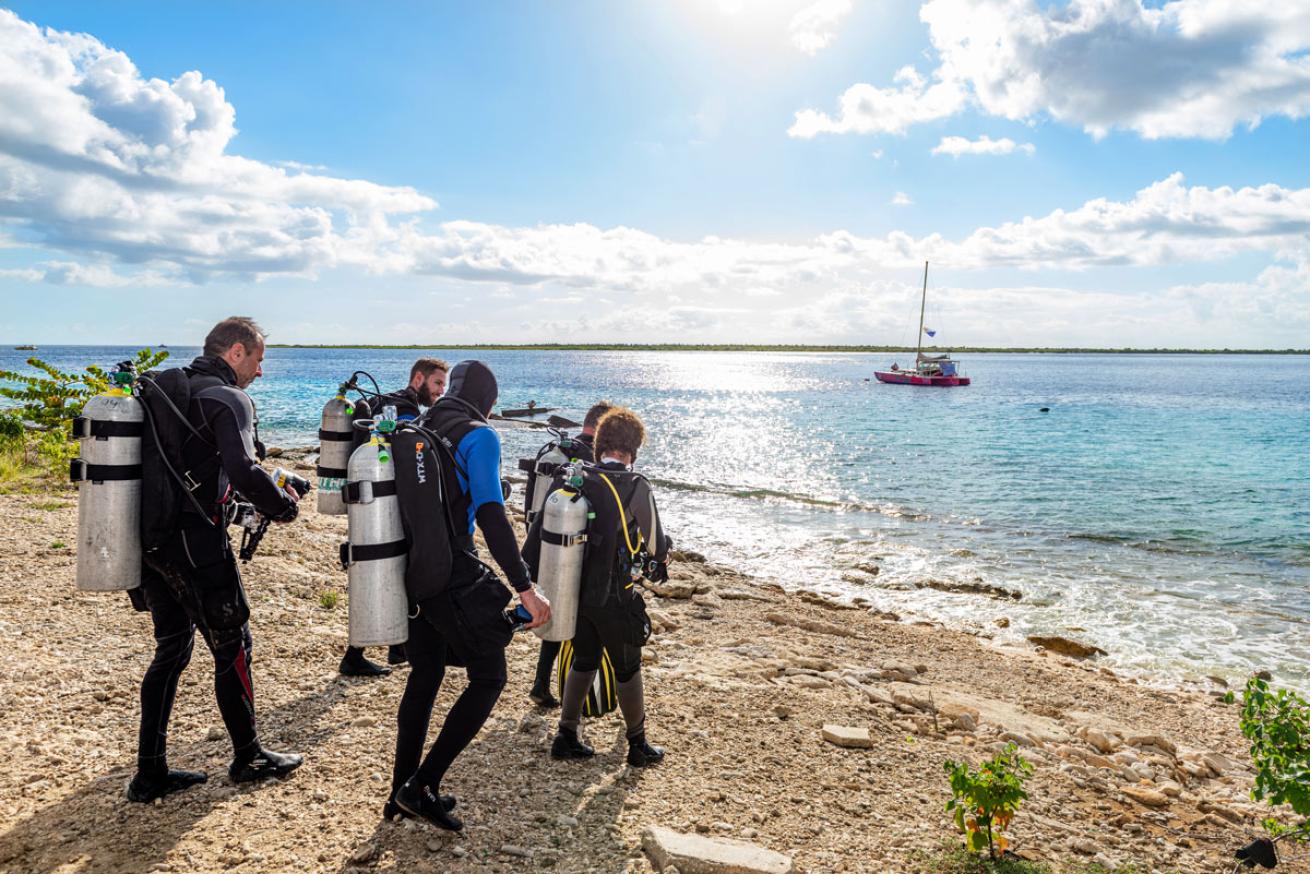
Lorenzo MittigaDivers head for the shore entry at Bari Reef.
The Science Behind It All
Predicting a coral spawning has come a long way since the first recorded instance in Australia in 1978. Today, Kristen Marhaver, a coral re-production scientist with CARMABI, says she is delighted at “how collaborative and international this puzzle-solving is.”
Scientists, nonprofits, divers, dive shops and underwater photographers are all sharing what they see.
With each recorded date and time of a spawn, scientists can more easily back-calculate spawning cues and better predict future spawns.
The main factors scientists rely on to track coral spawnings are: number of days after the full moon, time after sunset, month and water temperature.
Typically, once a coral species has been recorded spawning, that species serves as an anchor, and it’s likely that corals of that and other species will spawn slightly before or after that time. Scientists and divers will start bracketing the recorded spawning time by hours and days to see not only the full spawning window of that species but also which other species are spawning before, during and after the anchor species.
Every coral species has its own code that scientists must work to uncover. Elliptical star coral, aka pine-apple coral, spawns at least 30 nights in a row, for example. “I can’t believe how hard it was to find at first, and now we’re still searching for the beginning and end of it,” Marhaver says.
After confirming one night of spawning for a species, scientists work to determine when the spawning period starts and ends, div-ing consecutive nights and multiple months in a row until finding an absence of spawning activity. Then it’s on to the next species.“
We spent the past 10 years figuring out every species we possibly could,” Marhaver says. “We are running out of new ones to figure out.”In the Caribbean, that is. Worldwide, more than 1,000 coral species exist, but the spawning times of less than half have ever been seen or decoded, which means the opportunities for discovery still remain vast.

Mark VermeijA male great star coral colony spawns in Curaçao.
5. Curaçao
Given that Curaçao is home to the Caribbean Research and Management of Biodiversity Foundation (CARMABI), it’s easy to have high expectations when it comes to coral spawning. This nonprofit foundation puts out coral spawning charts as precise as German train schedules—tracking 19 species across more than seven months, down to the month, day and minute.
“We have this gorgeous calendar, but if you really just want to make it easy and see a sure thing, go for the grooved brain coral,” says Megan Beazley, a dive instructor with PADI Five Star dive operator Ocean Encounters, located 4.5 miles east of capital city Willemstad.
Grooved brain coral is easy to identify, thanks to its deep valleys. The bigger selling point is that it spawns monthly, April to October, 10 to 13 days after the full moon.
Best of all? You don’t even have to shift your whole day around the spawn, as it occurs between 5:45 p.m. and 7 p.m.
Oh, and you can find this coral species at nearly every dive site.
When to go: Time your trip depending on the species. Grooved brain corals spawn April to October, days 10 to 13 after the full moon. For up to five species spawning on a single dive, focus on days 5 to 8 after the full moons in September and early October.
Water temperature: April temps are around 78 degrees; October reaches about 85 degrees.
Visibility: 50 to 80 feet.
Operator: Ocean Encounters
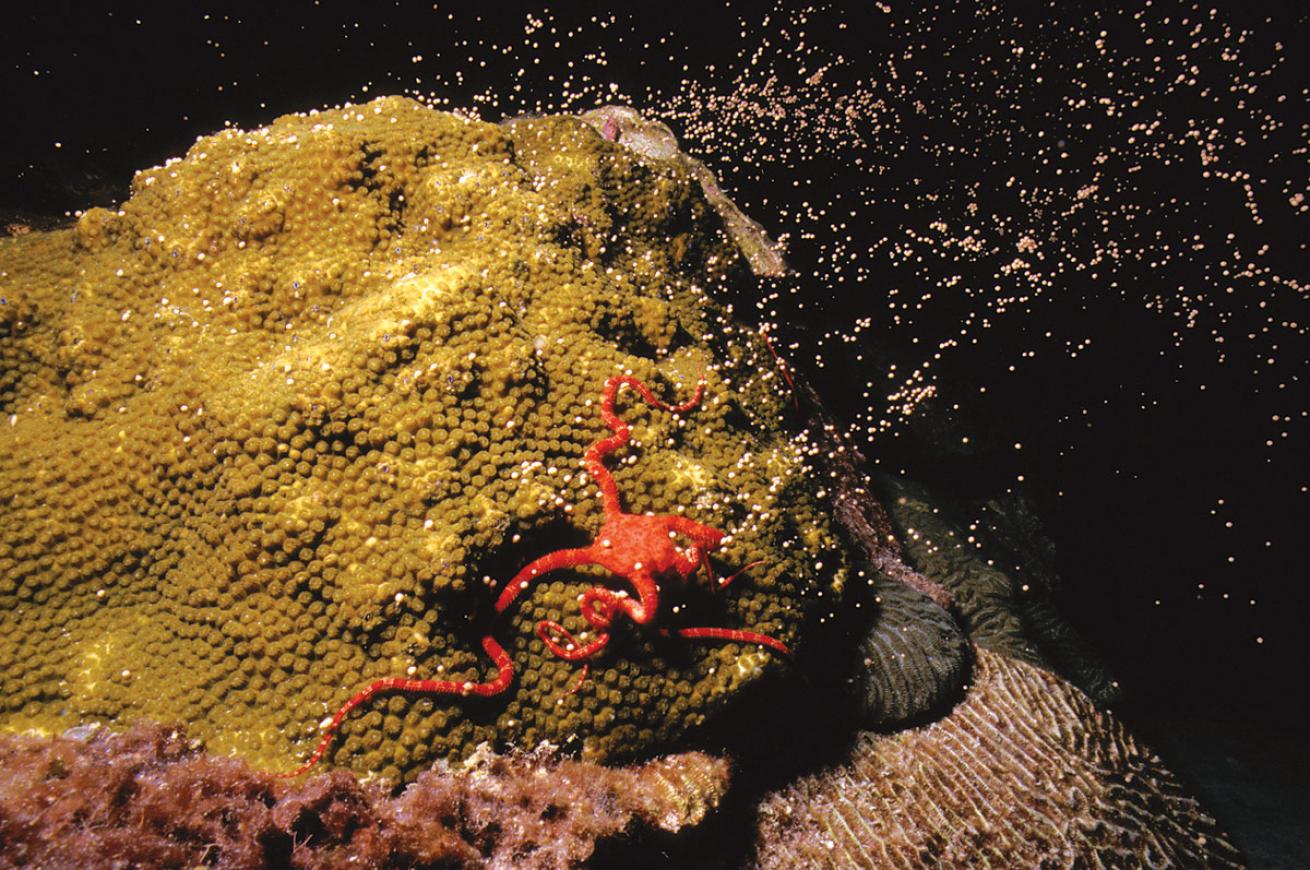
Emma HickersonA brittle star coral on a spawning boulder star coral (Orbicella franksi) colony.
6. Flower Garden Banks, Texas
Keep your focus too narrow during a coral spawning event at Flower Garden Banks and you just might miss the bigger show.
“It’s easy to get caught up watching the corals, but they’re not the only thing mating,” says Capt. Dennis Gray Jr., of Texas Caribbean Charters, the only scuba liveaboard offering trips to the Flower Garden Banks National Marine Sanctuary, located 70 miles off the coast of Galveston. “Ruby starfish females do a dance and stand on the tips of their legs. This is the only time of year you’ll see this.”
During the coral spawn, the curtain is pulled back, so to speak, revealing critters—such as brittle stars and eels—that live under the corals but stay hidden the rest of the year. “At the same time, the concentration of filter-feeders like manta rays is much higher,” he says. Then there are the sharks—silkies and sandbars—that haunt the periphery of the group of divers casting light about the reef, spotlighting food. “It can be overwhelming for new divers,” says Gray.
That said, it’s an event where everything feels electric. “Sometimes we go and it just doesn’t feel like the reef is on, but when it’s a spawn, it’s as if someone flipped a switch and everything is just buzzing,” says Gray.
When to go: Days 6, 7, 8, 9 and 10 after the full moon in August.
Water temperature: Low to mid-80s.
Visibility: 80 to 100 feet, but that drops temporarily during the spawn.
Operator: Texas Caribbean Charters
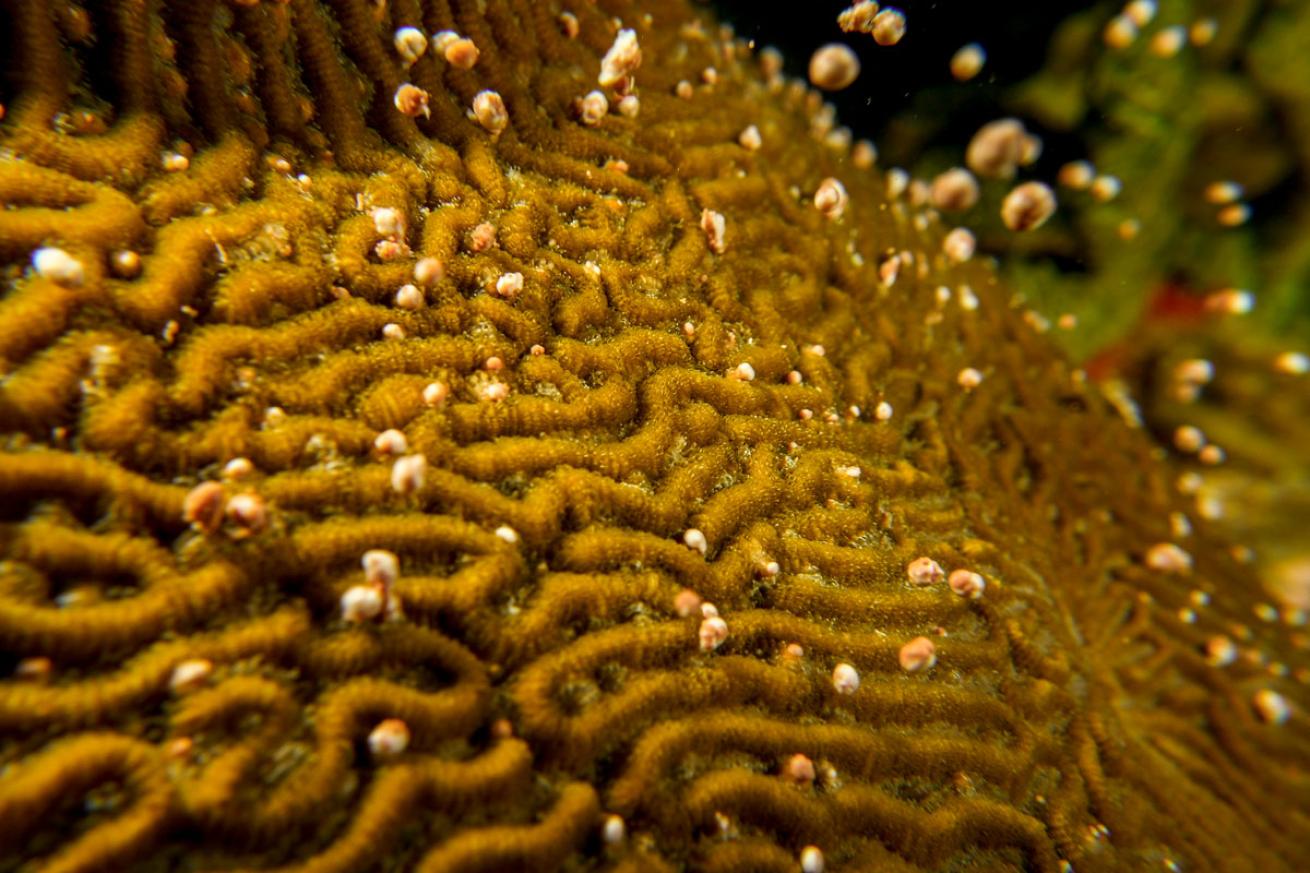
Anse Chastanet ResortCoral spawning happening at Anse Chastanet Resort on St. Lucia.
7. St. Lucia
Suiting up after sundown can be a hard sell for some divers, but Anse Chastanet Resort, on the Caribbean island of St. Lucia, is located right on the beach, with the on-site dive center, Scuba St. Lucia, just steps from a shallow plateau reef system. “You can go in at your leisure—there’s no pressure,” says Callistus Jackson, assistant manager at Scuba St. Lucia.
The spawning typically starts between 8:45 p.m. and 9:15 p.m. Dive staff helps guests coordinate their dive time to make the most of the event. The reefs that they focus on for the spawn are accessible via shore dive. Most watchers tend to stay at a depth of 15 feet for a longer dive.
As the experience unfolds, most first-timers struggle only with letting it all sink in. “It’s really just an out-of-this-world experience,” says Jackson.
“Once you finish that last spawning dive, you have to go a whole year before you can relive the moment.
When to go: Seven days after the full moon of August.
Water temperature: 84 degrees.
Visibility: Offshore visibility is 80 to 100 feet. On an inshore dive, visibility is closer to 40 to 60 feet.
Operator: Scuba St. Lucia at Anse Chastanet


